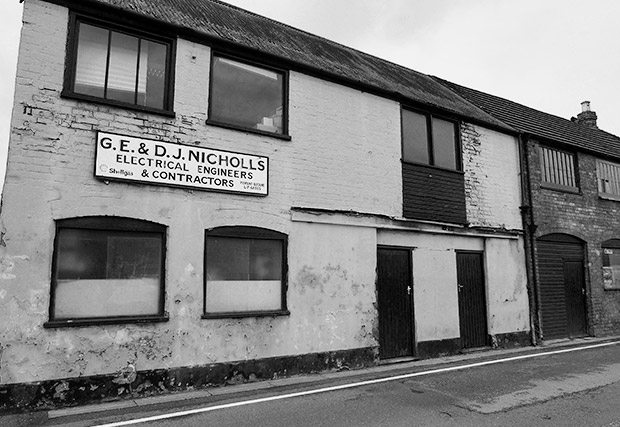
Last Sunday we paid a visit to Ross-on-Wye, a small market town (pop: 10,089) in south eastern Herefordshire, England, situated on the River Wye, on the northern edge of the Forest of Dean.
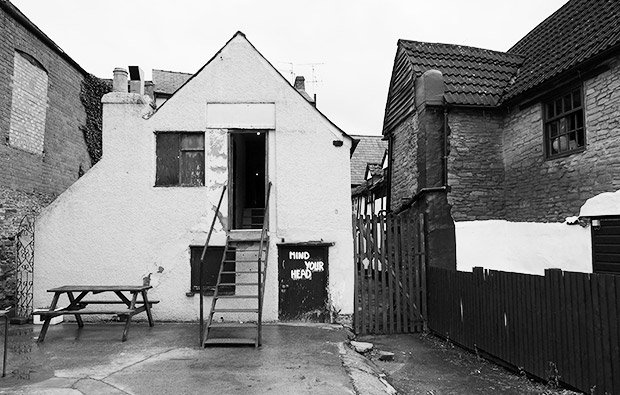
A bit of history
Apparently the birthplace of the British tourist industry, Ross-on-Wye was put on the map after the rector, Dr John Egerton, took folks on boat trips down the dramatic Wye valley in 1745.
Soon a magnet for fashionable seekers of the “Picturesque“, the valley’s steep sides, castles and abbeys were documented in a 1782 illustrated tour guide by William Gilpin, called “Observations on the River Wye.”
By 1808 a tourist stampede saw eight boats making regular excursions down the Wye, and by 1850 the Victorian equivalents of bloggers had published over 20 accounts of their Wye Tours.
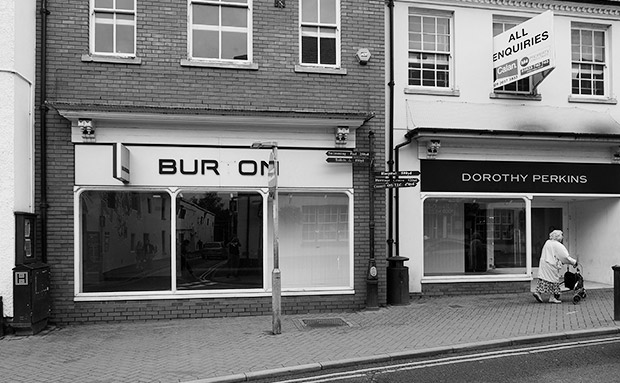
Ross On Wye today
In my mind, I was expecting a quaint, bustling market town, full of interesting nooks and crannies, but their main shopping street had suffered the same fate of many others in the UK, with a depressing array of closed down stores and pubs.
Here’s some photos taken from my speedy strut around town.
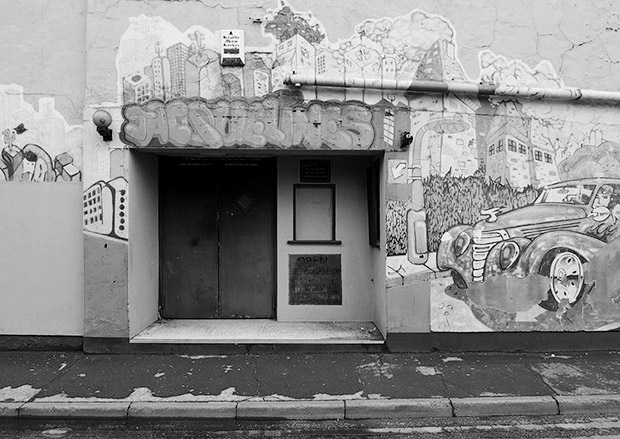
Jacqueline’s Nite Spot at 24 Broad Street.
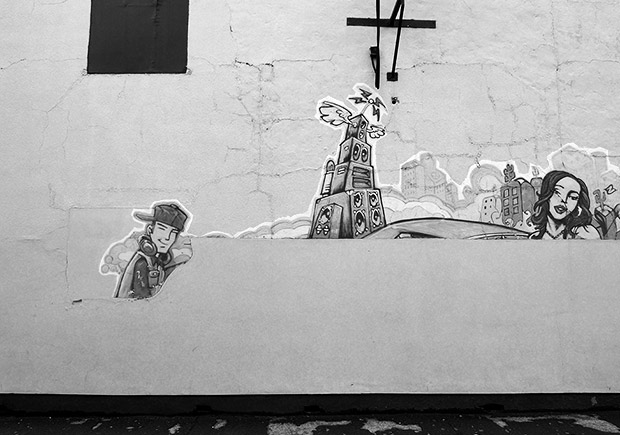
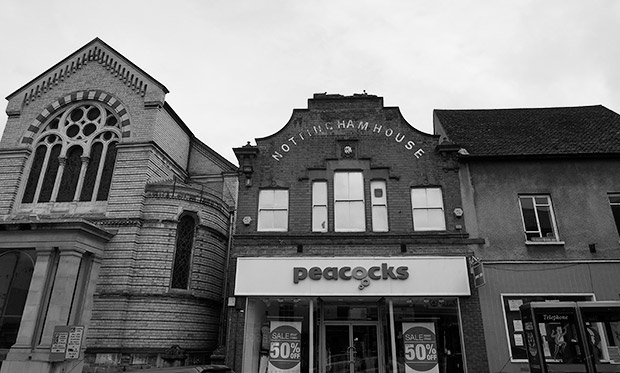
Nottingham House on Broad Street, currently a Peacocks store, next to the Baptist Chapel (built 1819, rebuilt by Thomas Blake in 1881).
Nearby was the Roxy Cinema which closed in 1985 after the site was bought by Gateway Supermarkets for development. According to Wikipedia, the the closure of the cinema has been “a big issue for over 25 years.”
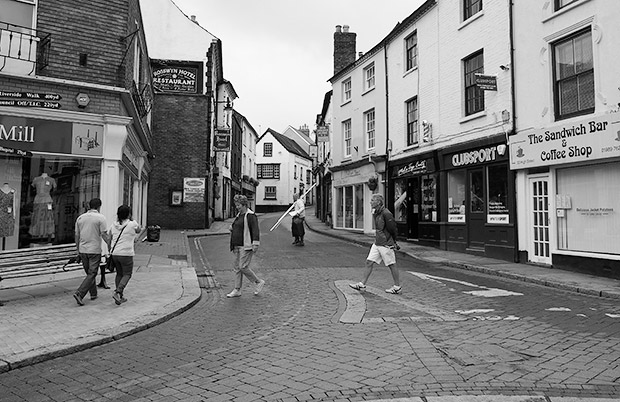
There’s some fine architecture to be found in Ross-on-Wye.
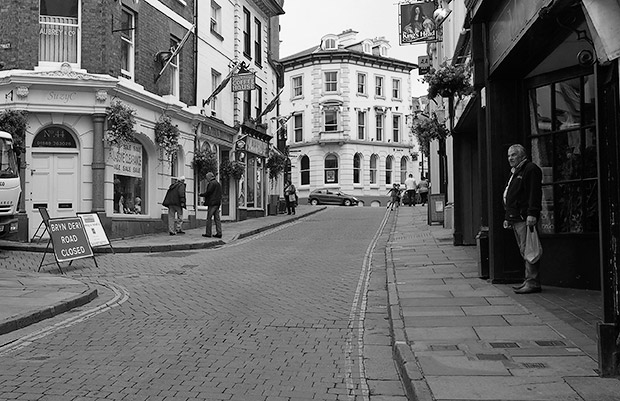
Looking up the High Street. The town’s proximity to Wales is perhaps reflected in the fact that the roadworks sign says, “Bryn Deri.”
I’m not sure what it’s doing in Ross, but Bryn means hill and Deri translates as ‘oak’.
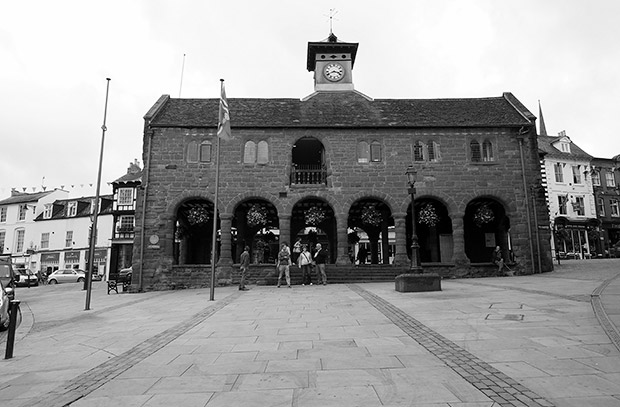
On Thursdays and Saturdays markets are held at the Market House building which dominates the town centre.
Constructed in red sandstone, the imposing structure was built between 1650 and 1654 and replaced the older, probably wooden, Booth Hall.
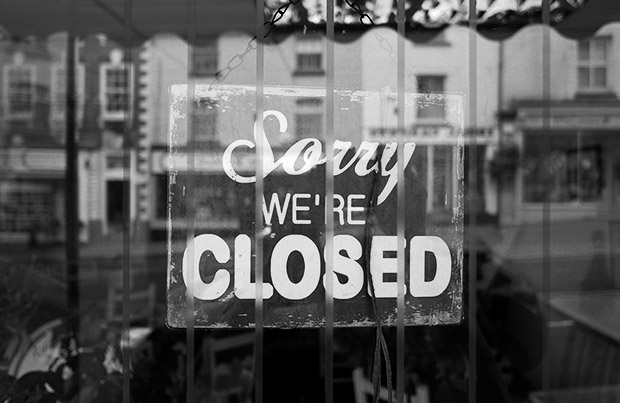
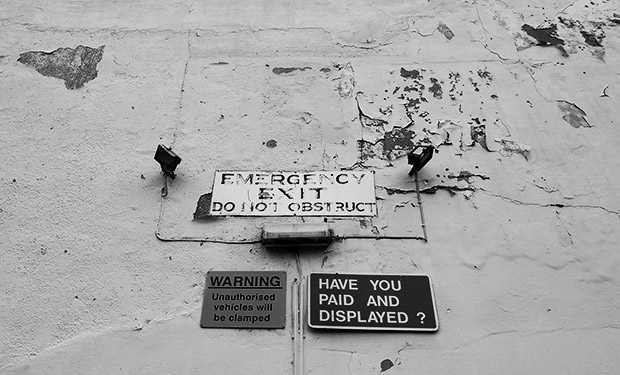
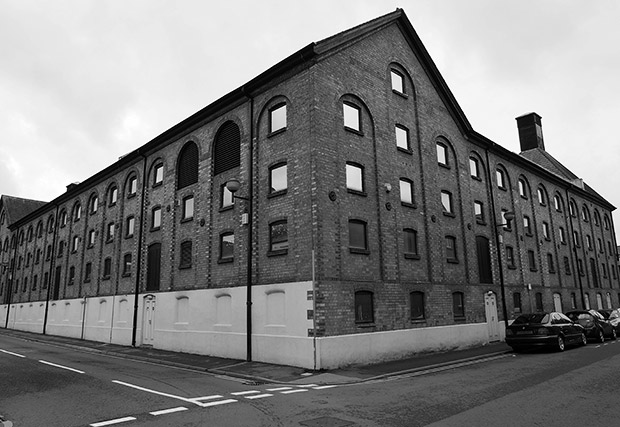
Imposing old warehouse.
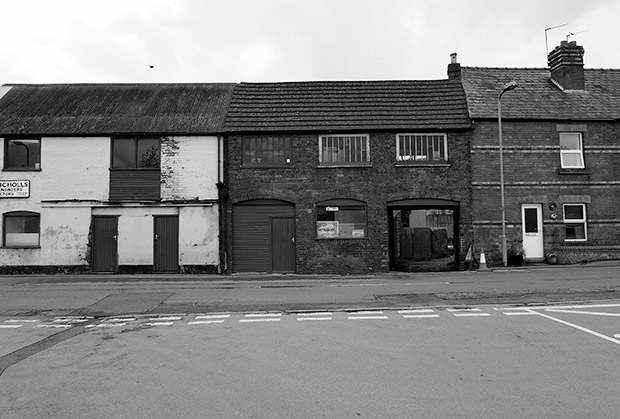
Buildings near the site of the the old railway station.
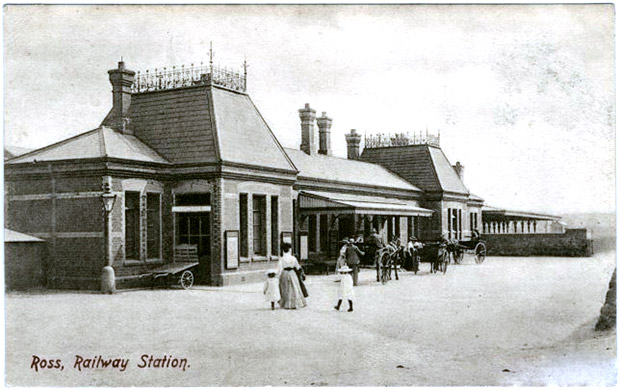
Ross-on-Wye once hosted a handsome railway station (built in 1890) that connected the town with Hereford, Monmouth and Gloucester.
All passenger lines to Ross on Wye were closed in 1964. The station buildings were destroyed in 1977 and the site turned into an industrial estate.
Happily, you can still get an idea of what the station must have looked like, as the modern station building at Kidderminster Town on the Severn Valley Railway station was based on the design for Ross-on-Wye.
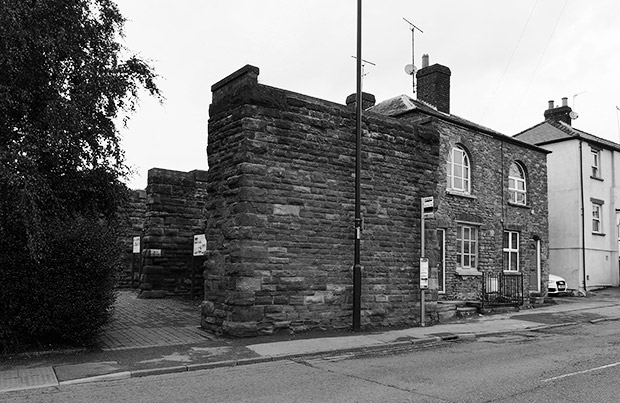
A few remnants of the line remain as if to tease the residents of what they’ve lost. Above can be seen some bridge piers, now bereft of track.
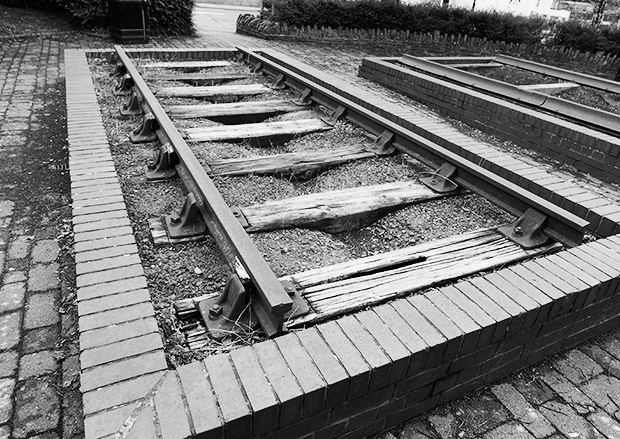
A small section of railway line still exists in the shape of this short stretch next to the old bridge. To the right can be seen an equally small stretch of broad gauge track.
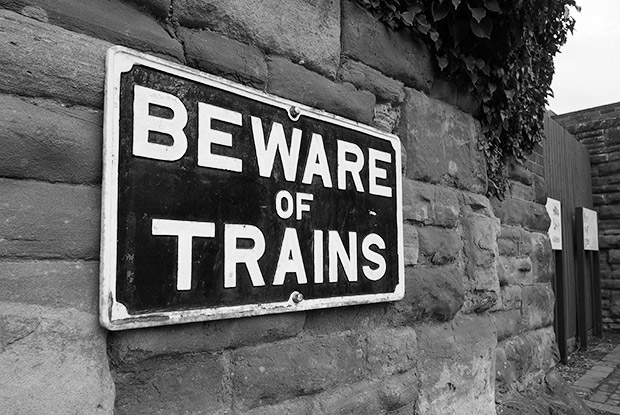
Some nearby information boards display the history of the long-abandoned line.
I suspect that Ross-on-Wye’s prosperity continues to be hit hard by the line’s closure.
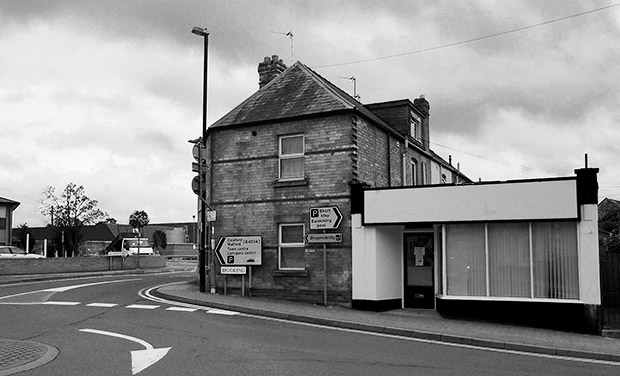
By the site of the old station.
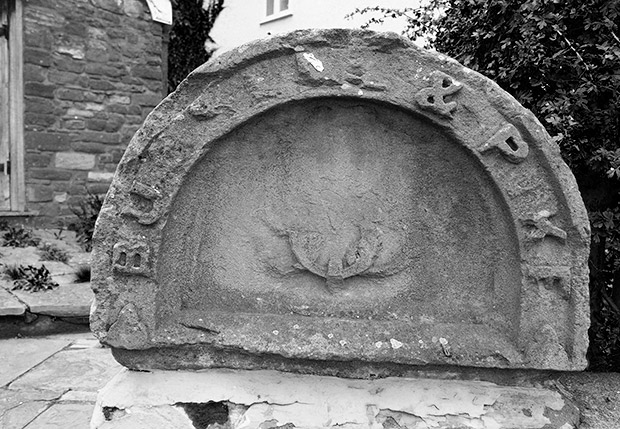
Old masonry.
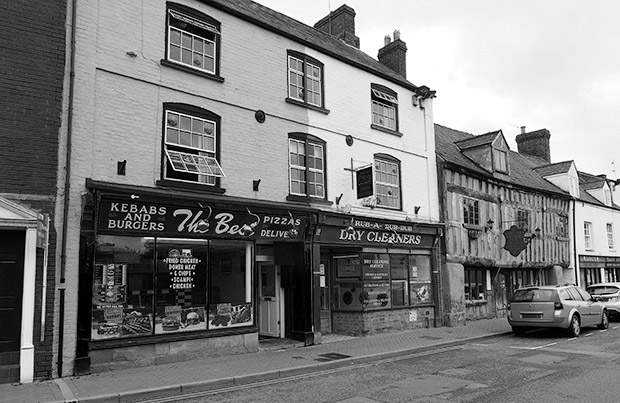
Brookend Street view.
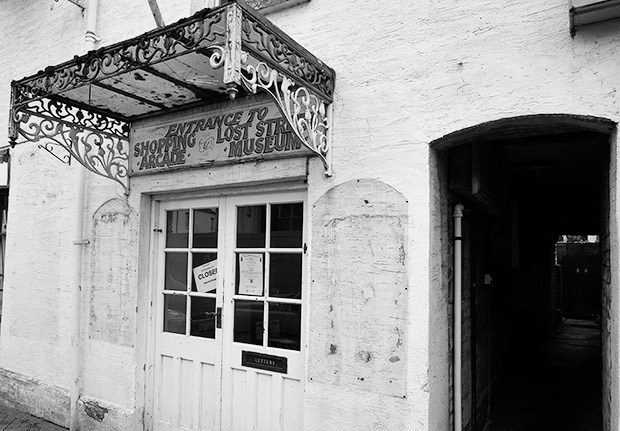
The intriguing sounding Lost Street Museum in Brookend Street was closed when I passed by, and has been since 1997 according to this site.
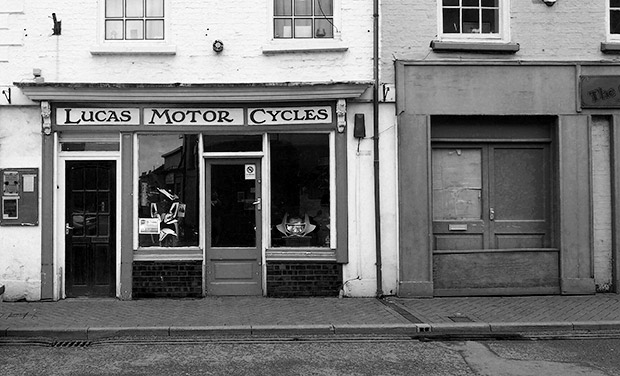
The rather splendid shop front of Lucas Motor Cycles, which opened in 1945.
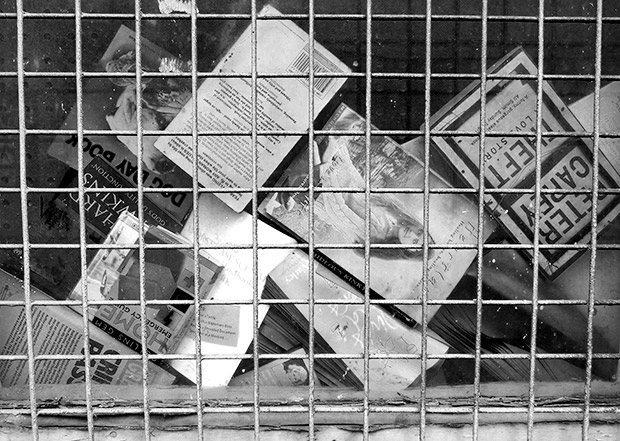
Shop window.
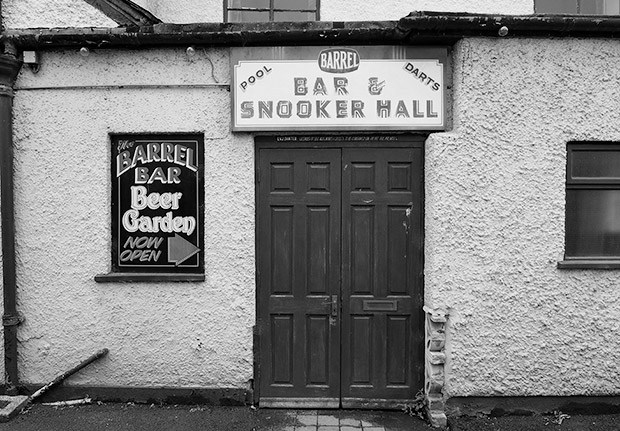
Bar & Snooker Hall, Barrel Bar.
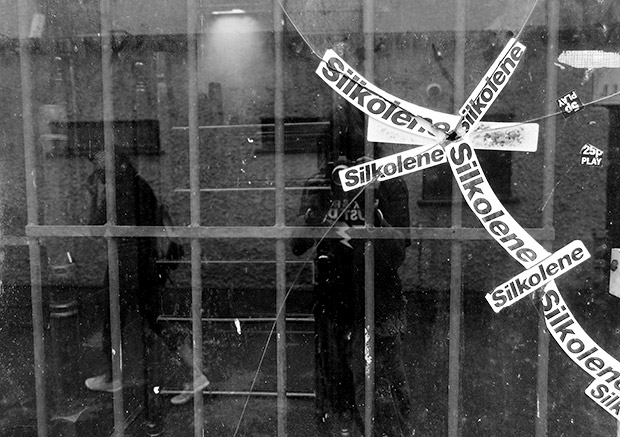
Patched up window.
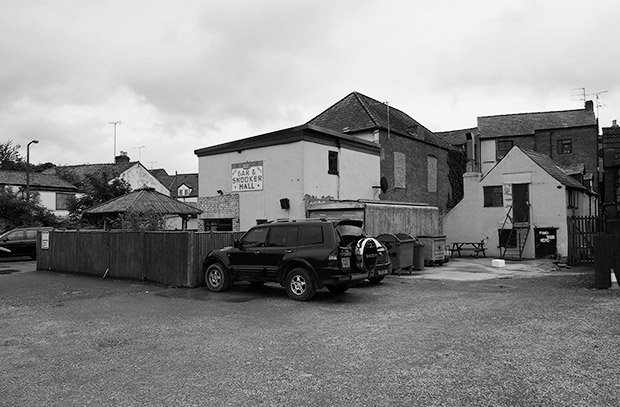
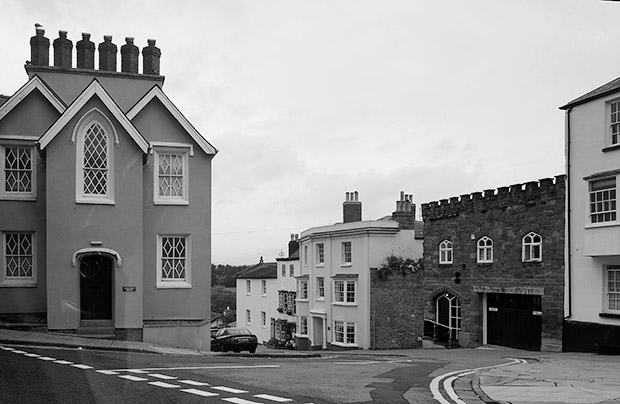
As we left town, we glimpsed these rather lovely houses.
More about Ross -on-Wye
Ross-on-Wye.com
wyenot.com
en.wikipedia.org/wiki/Ross-on-Wye
Map location

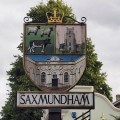
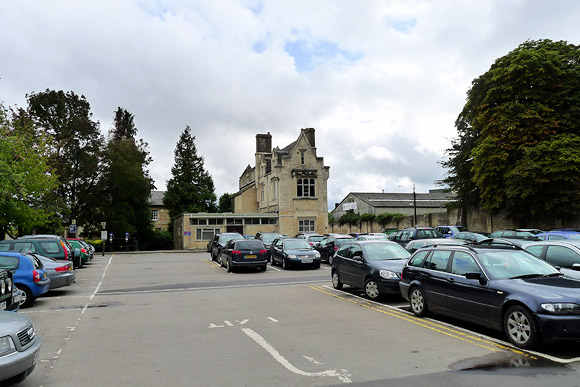

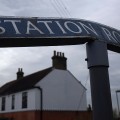

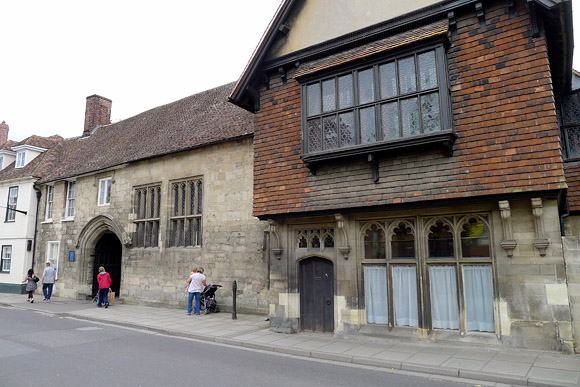
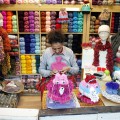
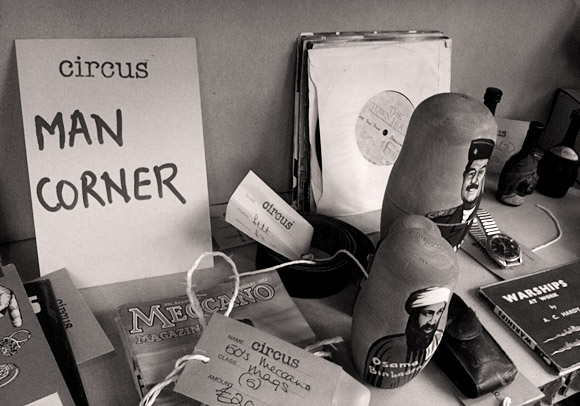



I live in North Kent and some very good friends moved away from here to live in Lydbrook in the Forest of Dean. I visit them as often as I can and have spent many contented hours wandering on my own around Ross-on-Wye. I think that your pictures have captured the atmosphere of this place very well. Clearly it was once an important centre for the farming, mining and industrial areas nearby but now it looks jaded as if it is clinging to those vestiges of its past. And yet it is interesting to see so many independent shops and businesses surviving. If you are interested in architecture and heritage there is much to view and nostalgia to absorb. I am frustrated that I missed the sections of rail and the bridge supports but then you missed the old engine shed (on the industrial estate that you mentioned) which is now a garden centre with tearoom allowing time for your imagination to work on the past!
I would recommend that you try to return on a Saturday when the town is usually quite lively and you can enjoy the ambience of the place over a leisurely beer or coffee as you watch the local people go about their shopping. A wander down to the River Wye is worth the stroll and it is possible to paddle a canoe (by prior arrangement with ‘Wye Pursuits’) for some six miles down to Kearne Bridge or further still to Symmonds Yat.
A final thought is that these places never seemed to fully recover from the loss of their rail link in the 1960’s as so many of us could have predicted even at the time. Take a look at Cirencester next!
Hi John – I’ve already been to Cirencester!
http://www.urban75.org/blog/cirencester-town-disused-railway-station-victorian-gothic-stuck-in-a-car-park/
I’ve belatedly caught up with your post about my adopted home town; so thanks for the insights of a visitor.
Cobbett described Ross, in one of his Rural Rides, as “a good, plain, country town” – little has changed. It apparently owes its origins to iron smelting (operational until the 20th century), tanneries (still one is operation) and its situation as a livestock centre on the main Fishguard- London road. The A40 now by-passes the town but until the 1990’s used High Street and was only diverted away from Old Gloucester road and upper High Street (pictured in “There’s some fine architecture to be found in Ross-on-Wye”) by an edict of George II when his coach stuck at the tricky turn in front of the white bay-windowed building you show.
Much of the fine architecture you note is actually a Georgian front on Tudor timber frame structures – this is hinted at in your pictures around The Barrel car park, but can be seen clearly from the car park to the side of Church Street – closed for work by Welsh Water (hence the ‘foreign’ sign) when you visited.
Unfortunately the railway line was never used to the extent predicted – except in its final days – so, despite its undoubted amenity value, it went the way of many other ill-founded speculative developments.
The “Imposing old warehouse” was the brewery Maltings (then latterly the South Herefordshire Agricultural Cooperative) before the 1980’s conversion to the shopping area of the same name.
“By the site of the old station.” is actually some distance from the station site (now the recycling yard and a garage). The north (left) side of the Millpond Street and Brookend Street junction was the site of a millpond surrounded by some of the worst slum housing in the town.
As J-W Reeves implies, the town has not really taken to Sunday trading – mostly perhaps because the majority of shop keepers own and operate their own businesses, but also because of the innate conservationism of a small town. Wednesday is still the quietest trading day despite it not having been ‘early closing’ for most shops for at least 25 years; Thursday is (with Saturday) still the busiest despite it no longer being cattle market day – they are still both both market stall days.
We still get a number of window patchings – usually the result of over-enthusiastic revelry on Friday or Saturday nights – and pub trade on Sundays used to be ‘lively’ when nearby Wales was ‘dry’.
“The Story of Ross”, written by Pat Hughes and Heather Hurley & published by Logaston Press is referenced, with other useful sources, at http://bit.ly/RoWdetail.
Thanks for the updates, Melvin. Very interesting!
Hello, my grandmother was the owner of the lost street museum, which is now a very cherished childhood memory of mine.
Hi Tia, it’s a few years since you posted that comment but I wonder if you know when the Lost Street Museum opened? I’m researching museums in the UK and it would be helpful to know a rough opening date. Thanks!